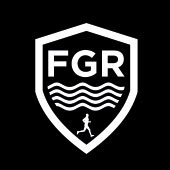Safety must be absolutely paramount on any Frog Graham Round attempt and while this is the completely down to the individual, it is recommended that the following should be considered before any attempt:
You should be an experienced off-road runner and open-water swimmer before you consider an attempt on the Frog Graham Round. This means you should have the navigational skills and mountaincraft to adequately find your way around the route, as well as navigate your way to safety should the need arise.
You should have the necessary water skills to get yourself to safety in case of any problems encountered during the swims. Ensure you have a means of survival, a wetsuit designed for open-water will aid with flotation, while a swimsac or one of the popular Swim Secure inflatable drybags (or tow floats) will provide both a means of transporting equipment and act as an emergency flotation device.
If you intend to swim any of the lakes without a wetsuit, be sure you have done sufficient acclimatisation training in cold water. The Lakes can be cold even in mid-summer and feel even more so to someone who has just ran a hard fell section.
If you have any doubts about your ability in the water, do not hesitate to enlist the support of an accompanying boat/canoe. This will also help with direction-finding across the lakes, sighting can be difficult on the FGR, particularly on the Bassenthwaite and Derwentwater swims. Some contenders have chosen to have accompanying swimmers with them on the swims.
If possible, adjust your schedule/timing so that it minimises the possibility of having to swim in the dark. If you do choose to do this, be absolutely certain you have made adequate safety and navigation provisions.
Be sure that you have left details with someone of your intentions and the route you are taking. Also the best-case and worst-case times you expect to be at key points. It goes without saying that this is particularly important if attempting a solo round.
Be sure that you have the means to call Mountain Rescue should the need arise. This means carrying a mobile phone, but bear in mind that cellular coverage can be sporadic in the fells.
Remember to carry a basic first aid kit (or ensure that your supporters have one). Accidents can and often do happen.
Check the weather forecast for the day you are attempting the Round as well as the days either side, weather forecasts should not be taken as gospel and can change without warning. Do not skimp on kit because of apparent good weather.
Be sure you have adequately recce’d the route in advance (including the swims), not doing so hugely increases the likelihood of failure. There are several areas enroute that could potentially be dangerous and they are outlined on “The Route” page. Note that the guidance should not be considered exhaustive, IT IS DOWN TO YOU TO KNOW THE RISKS!
Be sure to have practised and trained for the transition from Running to Swimming (and then Running). This is an important element of the FGR, do not be under any illusions about (for example) the physical challenge of swimming across Derwentwater after running nearly 40 miles across the fells.
The growth of bracken poses a considerable problem on the FGR route and you should be aware that there may be none present during an early Spring recce, then the same path be completely overgrown later in the year. This is most serious on the approaches to Low Bank, the slopes of Mellbreak, across Scale Beck enroute Red Pike and then on the lower slopes of High Stile above Horse Close. The climb up to Robinson is covered in bracken, but the path is usually clear.

